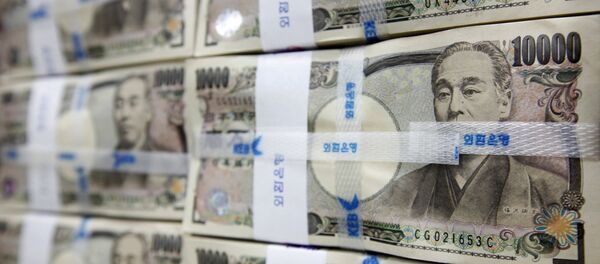Kristian Rouz – The Japanese economy is once again balancing on the edge of disinflation, having been mired in lackluster economic growth for the past two-and-a-half decades. As a result, the Bank of Japan (BoJ) is exploring new options to expand the scope of its fiscal and monetary policies in attempts to revitalize the nation's productive capacity.
The BoJ started its two-day policy meeting on Tuesday, having promised a full reassessment of its current measures and their efficiency in boosting growth, with all factors taken into the account. While the results of the assessment are not hard to foresee, the further stimulus options are hardly viable, as monetary policies have seemingly reached the limits of their efficiency. Subsequently, while government fiscal stimulus could boost domestic consumption and growth, such measures would also propel the yen’s value even higher, decimating Japanese exports and creating longer-term negative pressure on economic expansion.
Therefore, any fiscal stimulus is bound to be accompanied by a proportional expansion in monetary easing.
"It's not as though we can keep lowering rates forever," a BOJ official said, as quoted by Nikkei on Tuesday, reflecting the understanding of the harmful spillovers the negative interest rate policies (NIRP) produce.
While the BoJ is closely watching the macroeconomic situation and tracking the spillovers of negative rates (at —0.1pc since January/February this year), other easing options are necessary.
One option is lower inflation targeting, as the current 2pc target is deemed out of reach anyway. Downgrading inflation expectations might help tame the negative consequences of the aggressive monetary stimulus, while allowing the BoJ to adjust the economy, gradually normalizing it from a longer-term perspective.
“It will take a lot of years for the BoJ to reach 2 percent. Just by looking at underlying inflation I don’t see very strong forces,” Sayuri Shirai, ex-BoJ board member said during an event at the Japan Society in New York on Monday. “Once we achieve 1 percent in a stable manner — which we haven't experienced in 20 years — then maybe the BoJ, the government and the public can have a discussion about whether we can go further.”
She suggested the BoJ might partially wrap up its bond-buying program by the yearend while simultaneously lowering the inflation target. A subsequent slowdown in growth could be addressed by further interest cuts (they're already negative). In the meantime, these several months of tougher monetary conditions might help identify the stronger and weaker sectors of the economy in order to develop guidelines for future policy action.
The BoJ has already been trying to restore higher interest rates by focusing on buying short-term bonds. The 2-year BBB-class bond yield slid to 0.22pc, whilst the 10-year yield rose, supporting Shirai’s argument.
Subsequently, if the economy gains momentum upon the execution of this elaborate scheme, NIRP might be ended, with monetary liquidity provided to the weakest sectors of the economy via targeted central bank loans – helicopter money.




